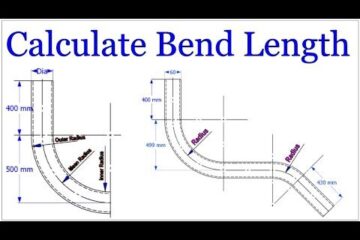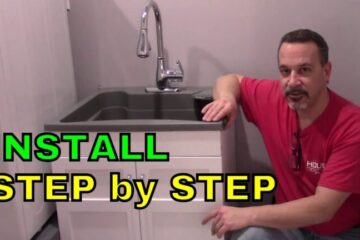In this article, you will discover practical solutions to address the common problem of leaking pipes. Whether you are a homeowner or a professional plumber, it is crucial to know effective and efficient methods to tackle this issue promptly. Leaking pipes can cause damage to your property, resulting in costly repairs if left unattended. By following the techniques outlined in this article, you will learn quick and easy ways to identify and fix leaking pipes, allowing you to mitigate potential damage and maintain the integrity of your plumbing system.
Types of Leaks
Pinhole leaks
Pinhole leaks are small, pinpoint-sized holes that can develop in pipes. They are often caused by corrosion or wear and tear over time. While they may seem minor, pinhole leaks can cause significant damage if left unattended, leading to water damage, mold growth, and increased water bills.
Joint leaks
Joint leaks occur at the connections between pipes. These leaks are typically caused by loose fittings or faulty seals. Joint leaks can be identified by water pooling around the joints or damp spots on walls or ceilings. If left untreated, these leaks can worsen and cause structural damage to your home.
Cracks
Cracks in pipes can be caused by a variety of factors, including freezing temperatures, aging pipes, or excessive water pressure. These leaks can be more challenging to identify as they may be hidden behind walls or underground. Cracks in pipes require immediate attention to prevent water damage and further deterioration of the pipes.
Corrosion
Corrosion occurs when pipes degrade over time due to exposure to moisture and chemicals. This type of leak often results in rusty or discolored water and can lead to pipe failure if not addressed promptly. Regular maintenance and inspections can help identify corrosion early on and prevent extensive damage.
Inspecting the Leak
Identifying the source
When faced with a leaking pipe, it is essential to determine the source of the leak. This can be done by checking for pooling water, damp spots, or signs of water damage. Carefully inspect the pipes for any visible signs of leaks such as water stains, dampness, or dripping. Once you have identified the source of the leak, you can move on to assessing the extent of the damage.
Checking for additional damage
Aside from identifying the primary leak, it is crucial to assess if there is any additional damage to the surrounding areas. Look for signs of water damage on walls, ceilings, or floors. Inspect nearby fixtures and connections for any signs of leakage. Identifying any additional damage will help you determine the appropriate repair method and prevent further issues down the line.
Temporary Solutions
Using epoxy putty
Epoxy putty is a versatile and effective temporary solution for patching small leaks. It is a two-part substance that, when mixed together, forms a waterproof seal. To use epoxy putty, start by preparing the area by cleaning and drying the surface around the leak. Then, follow the manufacturer’s instructions for mixing and applying the putty to the affected area. Allow the epoxy putty to cure fully before turning the water supply back on.
Applying rubber coupling
Rubber couplings are flexible connectors that can be used to temporarily repair leaks in pipes. To apply a rubber coupling, start by cutting out a section of the damaged pipe or fitting. Slide the rubber coupling over the remaining pipe ends, ensuring a tight fit. The rubber coupling acts as a temporary seal, allowing you to control the leak until a permanent solution can be implemented.
Using a pipe clamp
A pipe clamp is a metal band that tightly secures around a leaking pipe, creating a temporary seal. To use a pipe clamp, first, make sure the area around the leak is clean and dry. Place the pipe clamp over the leak and adjust it to provide a snug fit. Use a wrench to tighten the clamp securely. Pipe clamps are a quick and effective temporary solution, but keep in mind that they are not a permanent fix.
Permanent Solutions
Replacing damaged section
When dealing with a more significant or persistent leak, it may be necessary to replace the damaged section of pipe entirely. This solution requires more time and effort but ensures a long-term fix. To replace a damaged section, start by cutting out the affected portion using a pipe cutter. Then, install a new section of pipe using appropriate fittings and connectors. Secure everything tightly, and check for any leaks once the water supply is restored.
Repairing with plumbing tape
Plumbing tape, also known as pipe repair tape or self-fusing silicone tape, can be used to provide a temporary or permanent fix for minor leaks. To repair a leak with plumbing tape, start by cleaning and drying the damaged area. Wrap the tape tightly around the leak, stretching it slightly as you go. Make sure to cover the entire affected area. The tape will bond to itself, creating a water-resistant seal.
Soldering the leak
Soldering is a permanent solution for repairing leaks in copper pipes. This method requires some skill and specialized tools but provides a durable and long-lasting fix. To solder a leak, start by cleaning the pipe and fittings thoroughly. Apply flux to the joints, then heat the area with a torch until the flux starts to bubble. Finally, apply solder to the joint, allowing it to flow into the gap and create a watertight seal.
Tools and Materials You’ll Need
To successfully fix leaking pipes, you’ll need the following tools and materials:
Adjustable wrench
An adjustable wrench is a versatile tool used for tightening or loosening nuts and bolts on plumbing fixtures.
Pipe cutter
A pipe cutter is a tool designed to cut through pipes cleanly and accurately. It is used for removing damaged sections of pipe during repairs.
Plumbing epoxy
Plumbing epoxy is a putty-like substance that hardens when mixed together and provides a waterproof seal. It is an effective temporary solution for small leaks.
Pipe repair tape
Pipe repair tape, also known as self-fusing silicone tape or plumbing tape, is a flexible tape that bonds to itself to create a watertight seal. It is useful for temporarily repairing leaks in pipes.
Step-by-step Guide – Temporary Solutions
Preparing the area
Before applying any temporary solution, it is essential to prepare the area properly. Start by turning off the water supply to the affected pipe. Clean and dry the area around the leak using a cloth or towel.
Mixing and applying epoxy putty
Follow the manufacturer’s instructions for mixing the epoxy putty. Once mixed, apply the putty to the leak, ensuring full coverage and a tight seal. Smooth out any excess putty using a putty knife or your fingers. Allow the epoxy putty to cure fully before turning the water supply back on.
Installing a rubber coupling
To install a rubber coupling, start by cutting out a section of the damaged pipe or fitting using a pipe cutter. Slide one end of the rubber coupling onto one pipe end and the other end onto the remaining pipe end. Ensure a tight fit by pushing or twisting the rubber coupling into place. Once properly installed, the rubber coupling will provide a temporary seal to control the leak until a permanent solution is implemented.
Applying a pipe clamp
Clean and dry the area around the leak. Open the pipe clamp and place it over the damaged section of pipe. Position the clamp so that it wraps around the leak, ensuring a snug fit. Use a wrench to tighten the clamp, compressing it against the pipe and creating a temporary seal. Check for any leaks and tighten the clamp further if necessary.
Step-by-step Guide – Permanent Solutions
Preparing the area
As with temporary solutions, start by turning off the water supply to the affected pipe. Clean and dry the area around the leak thoroughly to ensure a proper repair.
Cutting out the damaged section
Using a pipe cutter, carefully cut out the damaged section of the pipe. Make straight and clean cuts to ensure a proper fit for the replacement section. Remove any burrs or rough edges from the pipe ends using a pipe reamer or sandpaper.
Applying plumbing tape
Wrap the plumbing tape tightly around the leak, starting a few inches before and continuing a few inches after the affected area. Stretch the tape slightly as you go to ensure a secure bond. The tape will bond to itself, creating a watertight seal. Trim off any excess tape and smooth out the edges to ensure a neat finish.
Soldering the leak
Soldering requires skill and specialized tools, so it is recommended to consult a professional plumber if you are not familiar with the process. Clean the pipe and fittings thoroughly using a wire brush or emery cloth. Apply flux to the joints and heat the area with a torch until the flux starts to bubble. Touch the solder to the joint and allow it to flow into the gap, creating a watertight seal. Let the joint cool and inspect for any leaks.
Preventive Measures
Insulating pipes
One of the most effective ways to prevent leaks is by insulating your pipes. Insulation helps protect pipes from extreme temperatures, which can cause them to expand and contract. By adding insulation, you reduce the risk of cracks or bursts. Insulation also helps to prevent condensation, reducing the chances of corrosion.
Avoiding excessive water pressure
High water pressure puts stress on pipes and can lead to leaks or bursts. Install a pressure regulator to ensure the water pressure remains within the recommended range for your plumbing system. Regularly monitor and adjust the pressure if necessary to prevent damage to your pipes.
Regular maintenance
Performing regular maintenance on your plumbing system can help identify and address potential issues before they become major problems. Inspect pipes for signs of corrosion, leaks, or damage. Check fittings and joints for tightness. Look for any damp spots or water damage in your home. By taking proactive measures, you can prevent leaks and save yourself from costly repairs in the future.
When to Call a Professional
Extensive damage
If the leak has caused extensive damage to your home’s structure or if multiple pipes are leaking, it is best to call a professional plumber. They have the expertise and tools to assess the situation and provide the necessary repairs. Attempting to fix extensive damage on your own can lead to further issues and may not provide a lasting solution.
Complex repairs
Some leaks require specialized knowledge and techniques to fix properly. If you are unsure how to proceed or if the repair seems complicated, it is recommended to seek professional assistance. Certified plumbers have the skills and experience to handle complex repairs effectively and ensure the job is done correctly.
Safety concerns
If the leaking pipe is in a hazardous location, such as near electrical outlets or in a confined space, it is crucial to prioritize safety. A professional plumber is equipped to handle these situations safely and can address the leak without putting you or your property at risk.
When it comes to leaking pipes, taking immediate action is crucial to prevent further damage. By identifying and inspecting the leak, you can determine the appropriate temporary or permanent solution. Temporary solutions such as epoxy putty, rubber couplings, or pipe clamps can provide immediate relief, allowing you time to arrange for permanent repairs. Permanent solutions such as replacing damaged sections, using plumbing tape, or soldering the leak ensure a lasting fix. Additionally, implementing preventive measures such as insulating pipes, maintaining appropriate water pressure, and conducting regular inspections can help prevent leaks from occurring in the first place. Remember, if the damage is extensive, the repair is complex, or safety is a concern, it is best to call a professional plumber to address the issue promptly and effectively. By taking a proactive approach to your plumbing system, you can save yourself from costly repairs and potential water damage in the future.



